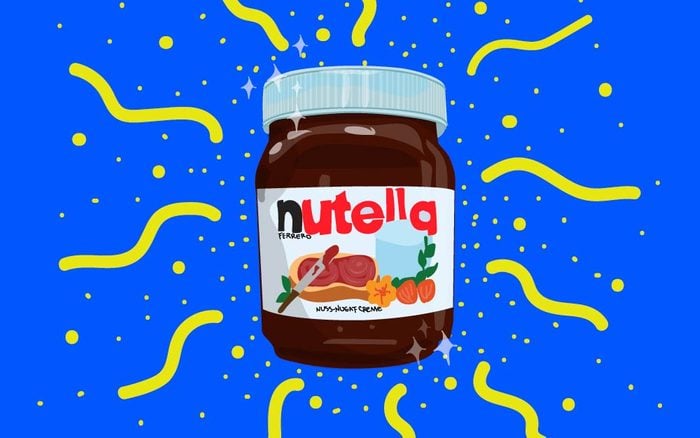Once You See Nutella’s Ingredients, You May Think Twice About Eating It
Updated: Mar. 18, 2021

Nutella does contain sugar and palm oil so you'll probably want to consume it as an occasional treat rather than an everyday spread.
Our editors and experts handpick every product we feature. We may earn a commission from your purchases.
Let’s be honest: Nutella is delicious. It’s no longer as heavily advertised as a healthy breakfast option (remember those happy families slathering it on their breakfast toast?) after two class-action lawsuits over deceptive advertising were settled in 2012. However, because it contains nuts and could be used as a spread instead of peanut butter or other nut butters, you might still have the impression that it’s relatively healthy. But if you take a closer look at all of the Nutella ingredients, you’ll find it’s really not that healthy after all.
A jar only contains five ingredients: cocoa, palm oil, hazelnuts, and skimmed milk powder. Advertisers play up the fact that it’s a delicious hazelnut spread with no artificial colors or preservatives, so you might feel good about eating it daily or giving it to your kids. But, what they don’t outright say is that more than half of the jar is pure sugar.
“The amount of sugar is 21 grams per serving. But let’s get real: Who only eats one serving of Nutella?” says Wesley McWhorter, MS, RD, chef and dietitian at UTHealth School of Public Health in Houston. “Nutella should be treated as a dessert or treat, not as a healthy meal.” Check out these other surprising (even disgusting!) ingredients that you never realized were in your food.
The nutrition label states that each 2 tablespoons (38 grams) contains 21 grams of sugar. Then, the second most used ingredient is palm oil, which is solid fat. So, you’re really not getting that much hazelnut. “Nuts are great for you (good source of protein, healthy fats and fiber) but unlike peanut, almond or other nut butters most of the fat in Nutella is coming from palm oil rather than the hazelnuts themselves,” says McWhorter. (Find out other foods that nutritionists try to never eat.)
“At Ferrero, we do not believe there are ‘good’ or ‘bad’ foods, only good and bad diets,” announced Nutella’s parent company in a 2018 statement. “With this in mind, we have always believed that offering small portions and educating consumers is the best way to help them enjoy their favorite treats in moderation.”
So portion control is one way to ensure you can enjoy this delicious chocolate-y spread (or make it an occasional treat rather than an everyday staple). Another option: Try healthier versions such as this organic hazelnut spread, which only has 12 grams of sugar, or these hazelnut spreads from Rigoni di Asiago, JEM, or Justin’s.
Another way to get your chocolate fix? Mayo Clinic suggests adding plain cocoa (look for non-Dutch 0r non-alkalized) to your grass-fed, organic, or plant-based milk, or morning oats—especially since flavanols in cocoa beans have antioxidant effects that reduce cell damage implicated in heart disease.
Did all of that information set you up for sugar shock? Relax—chocolate is also beneficial to your health—in moderation, of course.

